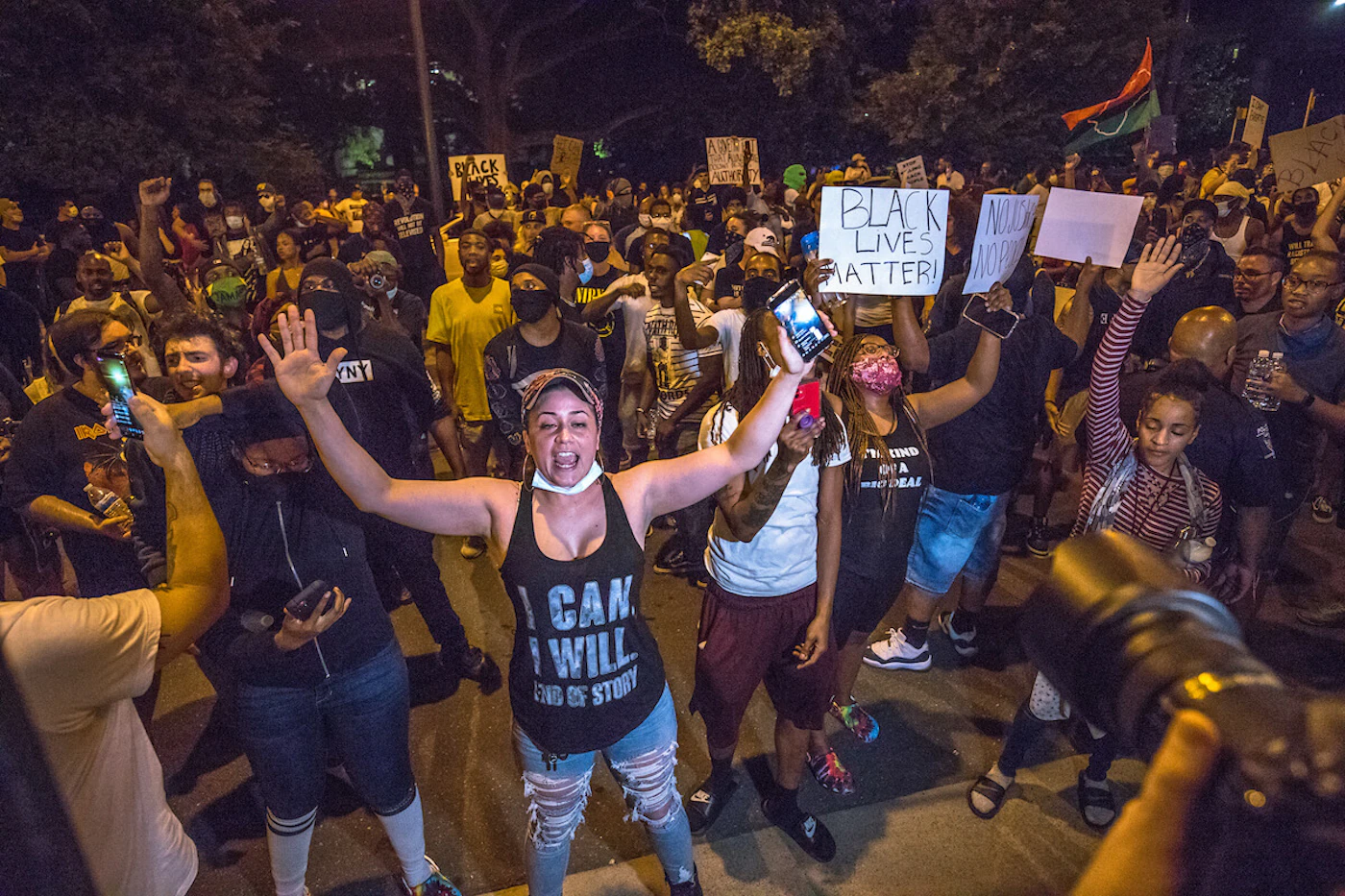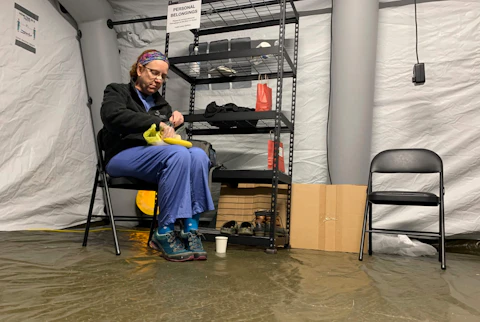The report examined cases in more than 300 US cities that hosted protests after George Floyd was killed in Minneapolis police custody in May.
The Black Lives Matters protests that swept the nation in June do not appear to have sparked noticeable increases in COVID-19 cases as was initially feared.
A new working paper put out by the National Bureau of Economic Research came to that conclusion after examining COVID-19 case reports for more than 300 U.S. cities that hosted protests following the May death of George Floyd while in Minneapolis police custody.
“[W]e find no evidence that urban protests reignited COVID-19 case growth during the more than three weeks following protest onset,” the report stated. “We conclude that predictions of broad negative public health consequences of Black Lives Matter protests were far too narrowly conceived.”
Unintended spread of the deadly novel coronavirus was a major public health worry as hundreds of thousands came out to voice their anger and frustration about police violence against Black Americans and other racial injustices.
Social distancing was difficult to observe in many cases, especially as aggressive police tactics in many cities early on in the movement herded large groups of people together and tear gas and pepper were deployed.
In North Carolina, protesters gathered in large crowds in places like Raleigh, Charlotte, Fayetteville. Demonstrators convened in smaller NC cities and towns too.
Dane West, a history teacher at Knightdale High School in Wake County, attended two protests in downtown Raleigh in early June. West wore a mask the entire time and self-quarantined at home over the next two weeks.
“Yes, there’s a pandemic and yes, I have to be careful,” West said. “But this is important and I’m not going to sit on the sidelines and be a silent observer.”
Officials: NC saw little COVID-19 spread from marches
Protests in cities like Charlotte, Raleigh, and Fayetteville were initially marked with unrest, with police in those cities using tear gas, rubber bullets to face off against protestors. But the response to the protests changed over the following days, as police began to de-escalate, and peaceful protests were held in cities big and small across the state.
North Carolina state officials, including Gov. Roy Cooper, voiced concerns that the protests could lead to more spread of COVID-19, which has already disproportionality harmed the Latino and Black communities in the state.
Cooper urged anyone who attended a protest to get tested for COVID-19, which he himself did after spending time meeting with protesters outside the Executive Mansion in Raleigh.
Those looking to get tested can look up a testing site here or check their symptoms here.
The state, however, has been dealing with a worrisome uptick in COVID-19 cases, with hospitalization and positive case counts at some of its highest levels yet. North Carolina is also consistently seeing 10% of tested cases come back positive, a sign that the disease is still prevalent and spreading in communities around the state.
But, in line with national findings, state officials who have been closely watching the case counts do not believe the Black Lives Matter protests are connected to the current spread of cases.
“We have not identified any clusters associated with protests in North Carolina,” Kelly Haight Connor, a spokeswoman for the N.C. Department of Health and Human Services (DHHS) told Cardinal & Pine. “We continue to recommend testing for people who attended protests, rallies, or other mass gatherings,” especially if social distancing was difficult to maintain.
That holds true in Cumberland County, where protests in the city of Fayetteville were held over several days, said Jennifer Green, the director of public health for Cumberland County.
“We have not seen or heard from anyone infected on a large scale who attended a protest or march,” she said.
Still, Green also urged anyone gathering in large groups, such as BLM protests or marches, to be tested for COVID-19, especially if they are symptomatic.
This story originally appeared on Cardinal & Pine.





